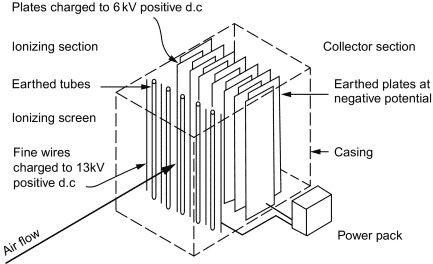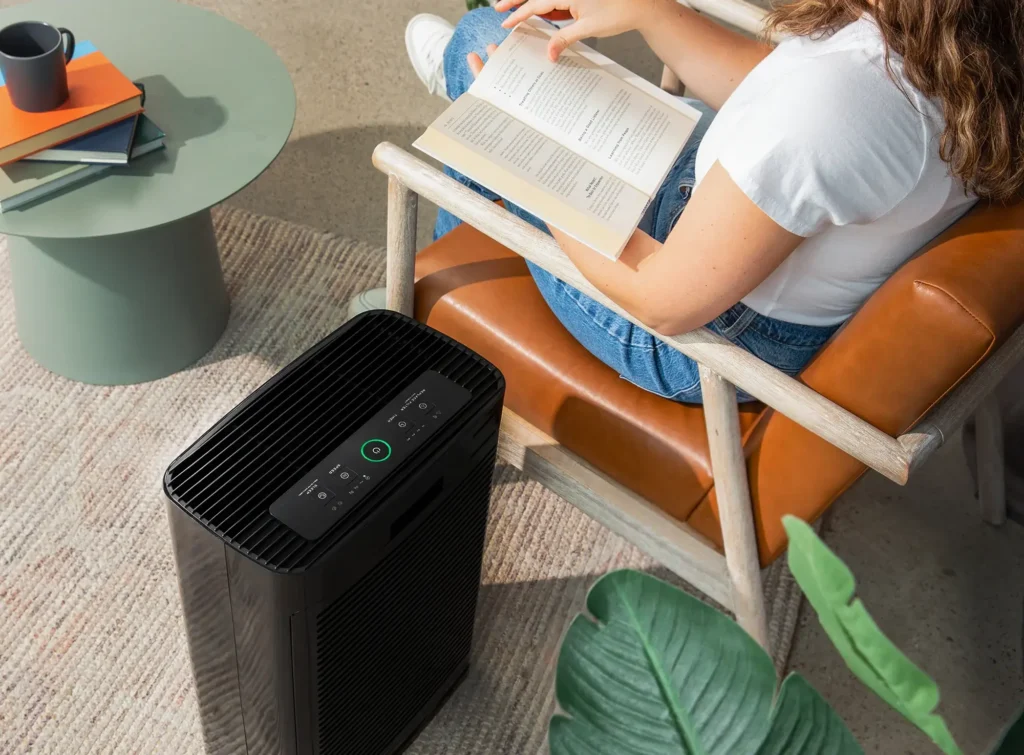Air filters like wall mounted ones such as electrostatic and HEPA types are made to combat air pollutants such as pollen, pet dander, dust, etc. The main difference between these two lies in their efficiency in performance and ease of household use.
Hospitals, commercial, and residential setting are places that require different types of air purifiers. HEPA and electrostatic perform well if paired with the settings they’re matched with.
The High-Efficiency Particulate Air or HEPA require replacement for a year or depending on the frequency of usage. It’s perfect for commercial and hospital setting. It can remove airborne particles and microorganisms that are usually found in these places.
The electrostatic air filter do not require replacement for its fitlers but it does require routinely maintenance. This option is perfect for residential settings where air pollutants are around 1-10pm.
HisoAir as an air purifier manufacturer provides a wide range of products to choose from when it comes to battling air pollutants. Contact them now to see their complete set of all your air sanitation needs. Furthermore, learn more about the difference between HEPA and electrostatic air filtes below.
What is an electrostatic air filter?

Source: Science Direct
The Electrostatic Air Filter is a permanent filter with low resistance. The pad is made of electrostatic media and expanded aluminum. This pad is securely riveted at one corner and enclosed in a heavy aluminum frame. They are made of filter media that has been "charged" to create that appealing quality.

Source: Alen
How does an electrostatic air filter work?
In the post how air purifier work it told us that using static electricity to charge particles as they enter the filter. This charge is released as the air passes through successive layers of the filter, resulting in the particle becoming trapped. To capture air particulates, its mechanism utilizes the naturally occurring phenomenon of static electricity. These filters employ polyurethane and polypropylene layers, as well as filtration media, to generate static electricity as air passes through the filter.

Source: Smith Filter
Are electrostatic air filters worth it?
While washable electrostatic filters are among the most cost-effective options on the market, they typically have a lower MERV rating. According to Air Oasis electrostatic filters, on average, capture less than 20% of dust particles and can only trap larger particles. Since residential homes usually have these types of air pollutants, electrostatic air filters are worth it for households.
How long do electrostatic air filters last?
If you have washable or electrostatic filters, they should be washed, dried, and reinstalled once a month. Washable filters are more environmentally friendly and can last 5 to 10 years if properly cleaned and reused.
How much do electrostatic air filters costs
Washable air filters are relatively inexpensive ($50-60), and you should only need to buy one for the life of the equipment! Consider it a "permanent filter," because you don't need to replace it until you're ready to replace your entire system.
Electrostatic air filters pros
A high-quality air purifier ensures the improvement of one’s health. Here are the common pros when having an air purifier at your home.
- Cost-efficiency: Electrostatic filters do not require replacement. It comes with the system altogether. Unlike HEPA air purifiers, you won’t have to worry about changing your filters routinely
- Hassle-free: The absence of the need to routinely replace filters adds more to the comfort of having your electrostatic air purifier. Filters that require replacement may be another headache because there are a lot of types out there to look out for.
- High-performance: Electrostatic air purifiers have good MERV ratings of around 5 to 6.
- Quality air filtration: Electrostatic air filters is fit for residential settings like at home, unlike a HEPA air purifier which may be overkill in such a place.
Electrostatic air filters cons
- Monthly maintenance: Electrostatic air filters may not require replacement but it does require routine sanitation. To ensure its longevity, it is a general rule to sanitize it regularly.
- There may be better options: Depending on the air quality, electrostatic air filters may only work in certain places. If your location tends to have worse air quality, it may be wise to opt for HEPA air purifiers.
- For people with respiratory issues, there may be better options than the electrostatic air filter. Washable filters tend to perform well with small dust particles than with large sizes.
- Poor airflow may become an issue if they’re not maintained well.
Are electrostatic air filters safe?
Electrostatic filters are safe, especially in eliminating smaller particles found in the air. Its washable feature makes it work better in removing such pollutants. This includes pet dander, dust, and others, which are allergens that may make a home filled with dirt.
Can electrostatic air purifiers work against covid-19?

Source: Hawk Environmental
Electrostatic air filters help reduce the likelihood of cross-infection. This is thanks to the washable feature of the filter. It performs well with particles that are smaller than the average air pollutant. Want to know more about how air purifiers kill viruses? Here are a few of the methods of how air purifiers kill viruses.
Do electrostatic air purifiers restrict airflow?
Electrostatic air purifiers do not restrict airflow when their filters are properly maintained. High air flow occurs when there are no obstructions on the filter. These obstructions can be tiny dust particles such as pet dander, pollen, etc. For this reason, it’s important to regularly sanitize your filters so air flow performs well.

Source: Kyowa
How effective are electrostatic air filters?
The difference between electrostatic vs non-electrostatic air filters is their performance in eliminating airborne pollutants. Electrostatic air filters work well with pollutants of certain sizes, usually, they may not be able to remove tinier particles. Non-electrostatic air filters like HEPA, on the other hand, can do such.
Electrostatic air filter vs HEPA filter (disposable)
According to Lake Air, electrostatic (reusable) and HEPA filters (disposable) are designed this way to address air pollutants while maximizing their features. Disposable filters like HEPA are made for hospitals where dangerous viruses are likely to proliferate. In commercial and residential settings, reusable filters like electrostatic types are enough to sanitize the air.
Electrostatic air filter vs flat-paneled fiberglass filter (disposable)
According to Gross Heating, flat-paneled fiberglass filters have a relatively lower MERV rating than electrostatic air filters. This means electrostatic air filters work better than the former, as they can remove fewer air contaminants.
Electrostatic air filter vs pleated media filter
According to Gross Heating, pleated media filters perform accordingly to the quality; thus their performance rating may vary. Those with high-quality work better than electrostatic air filters and are usually used in commercial and hospital settings.
Electrostatic air filter vs standard air purifier: which air filter type is better for use?
Air purifiers is needed because it cleans the air we breathe and improve our health. Sanitized air that circulates in our system helps our bodies to function properly as there are fewer irritants to look out for. Electrostatic air filters vs. a standard air purifier may perform well in a residential setting. So if you live at home and are looking for a quality air purifier, you may wanna check out air purifier brands.
This brand is known for its long history in the business of OEM air purifier and ODM air purifiers. So, whether you’re in to improve air quality in a commercial or residential setting, best believe that business is equipped for all that you need. Contact HisoAir now for more information.







